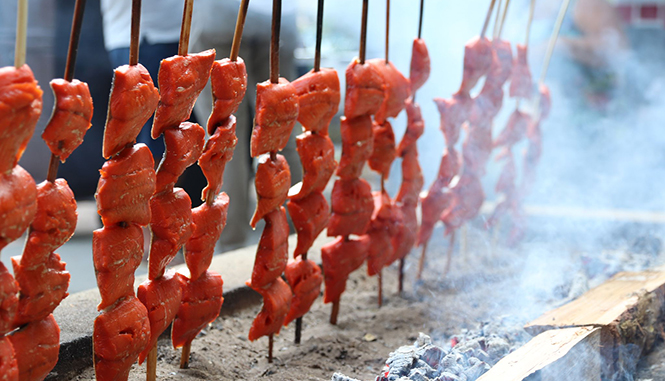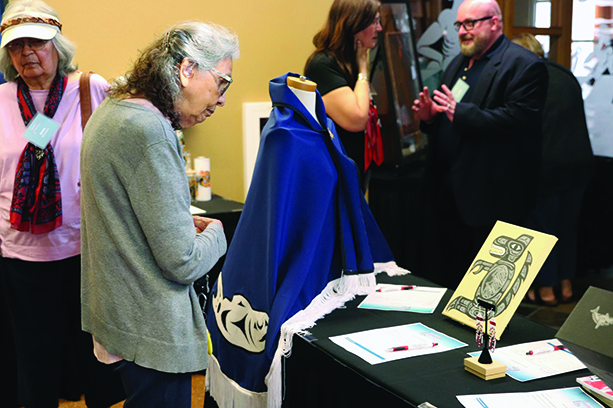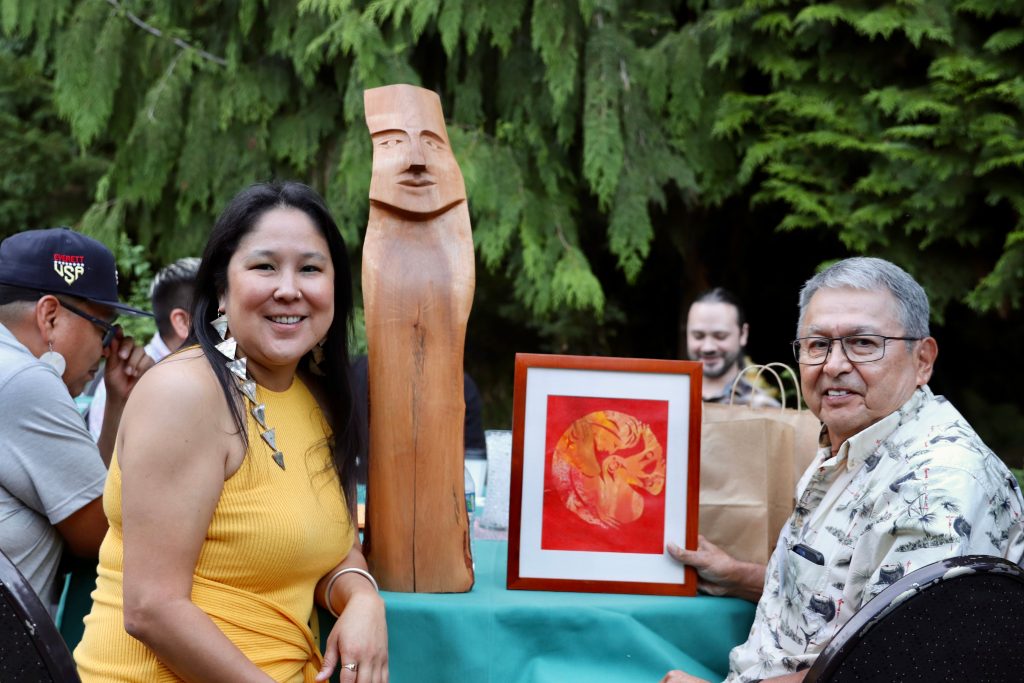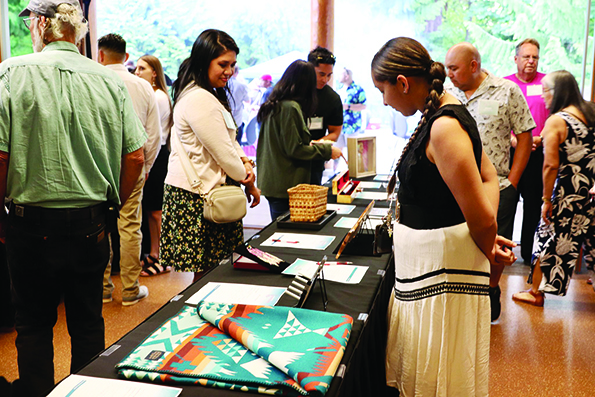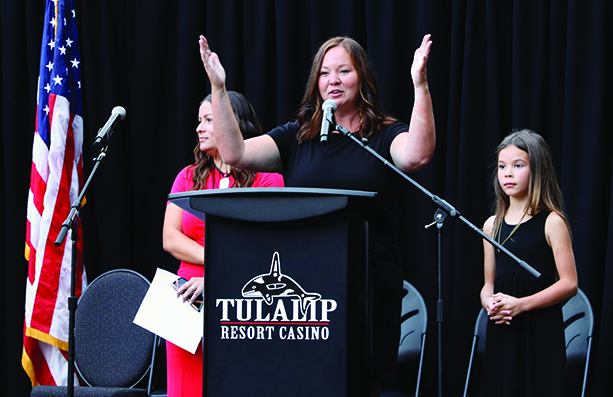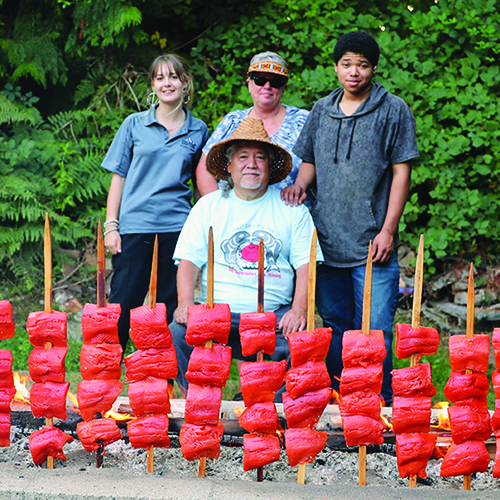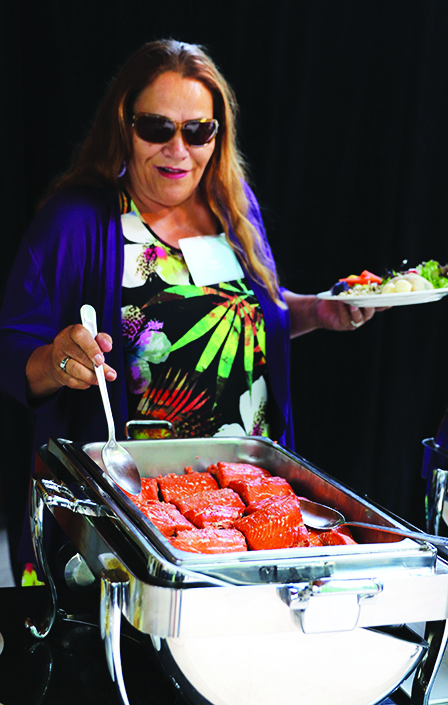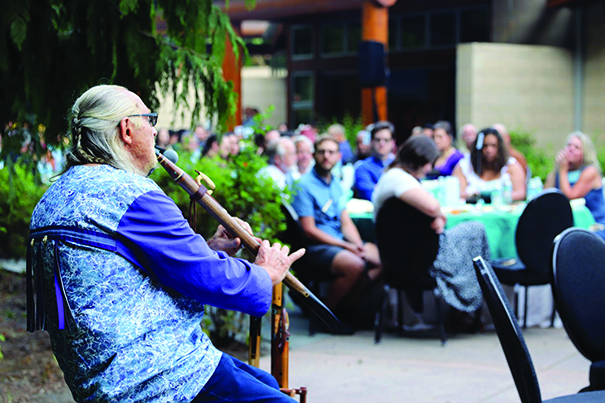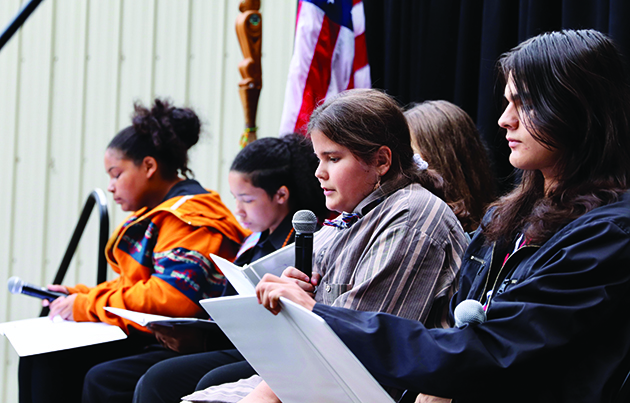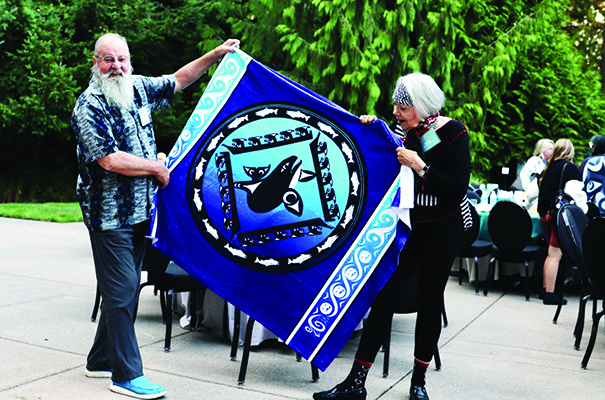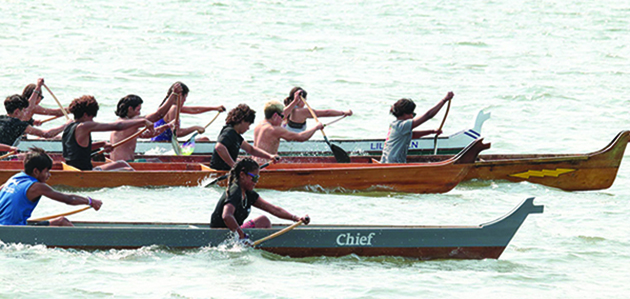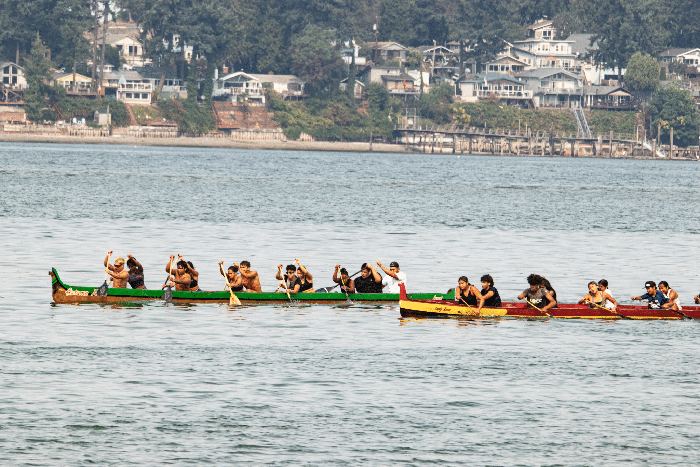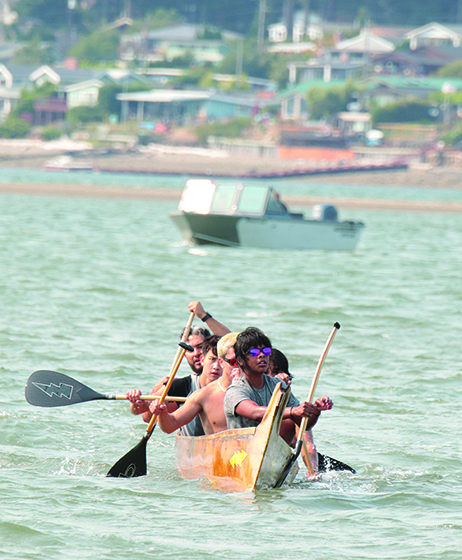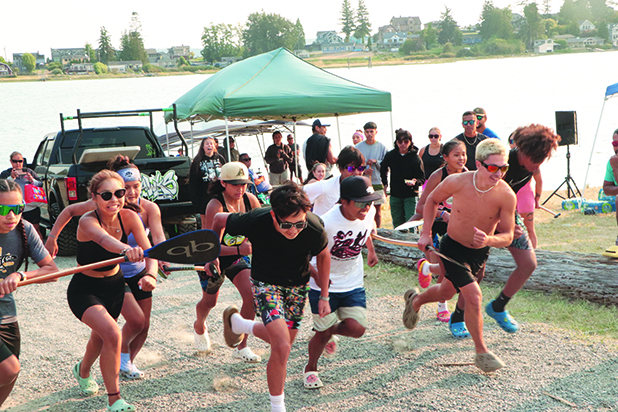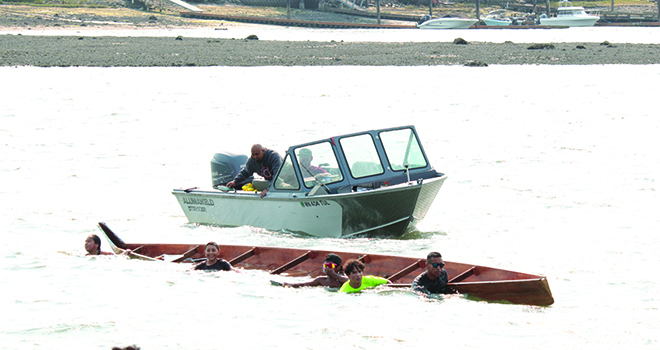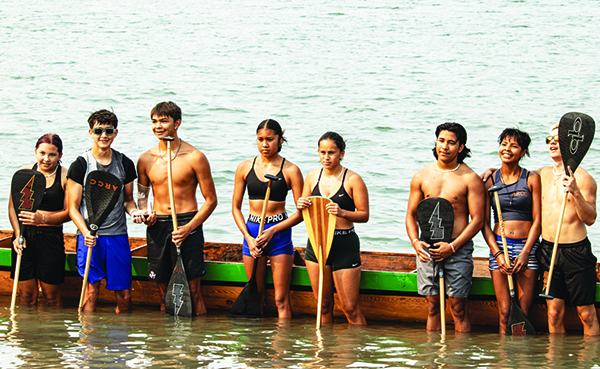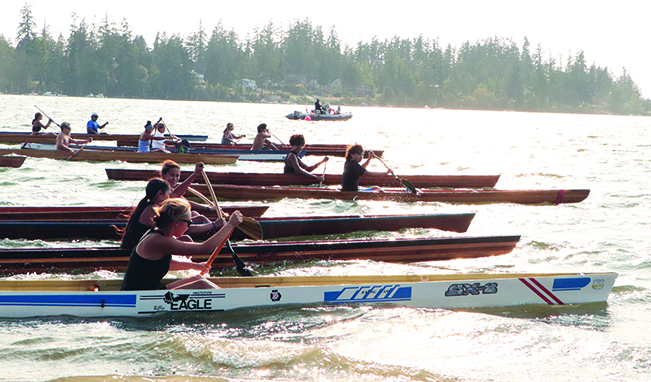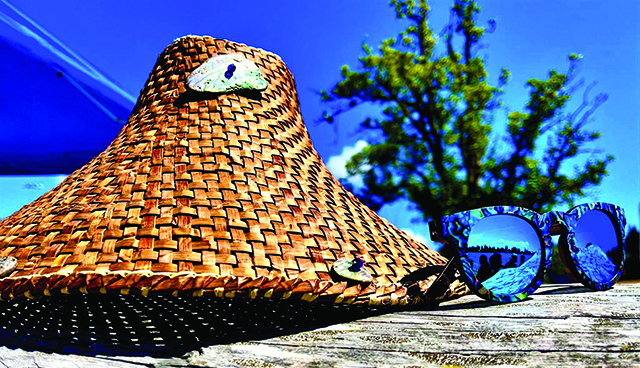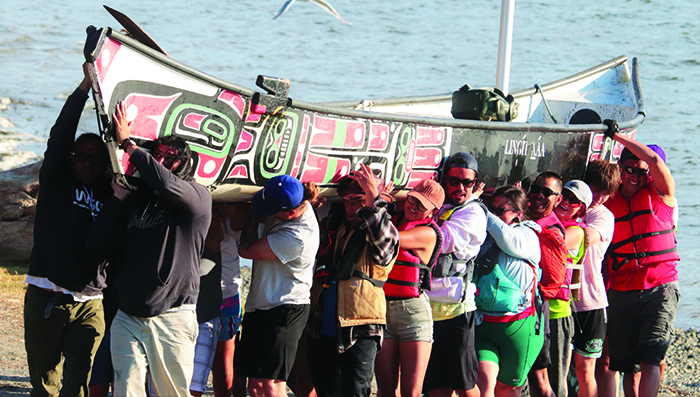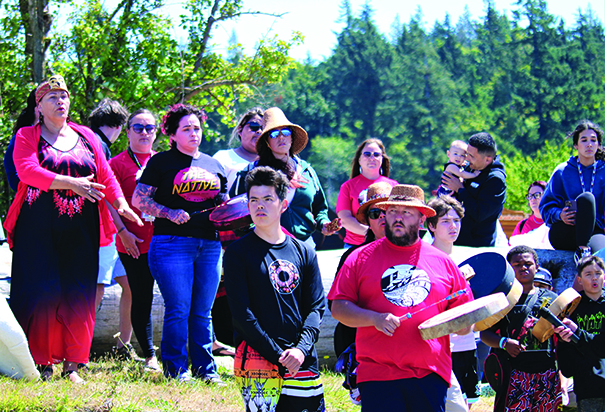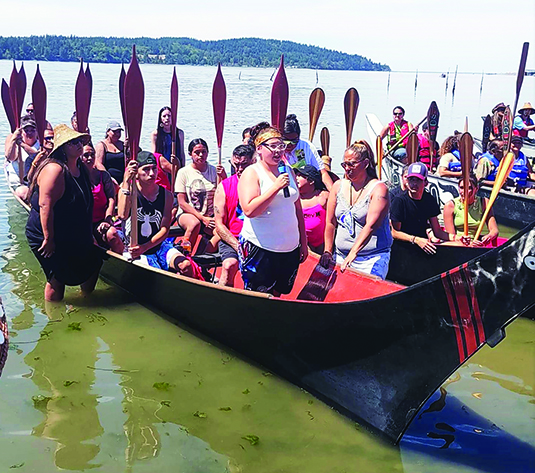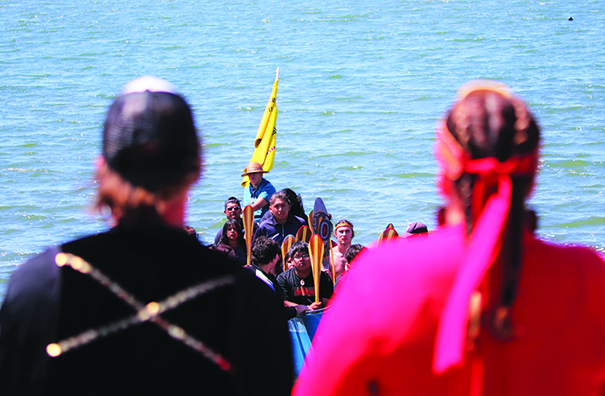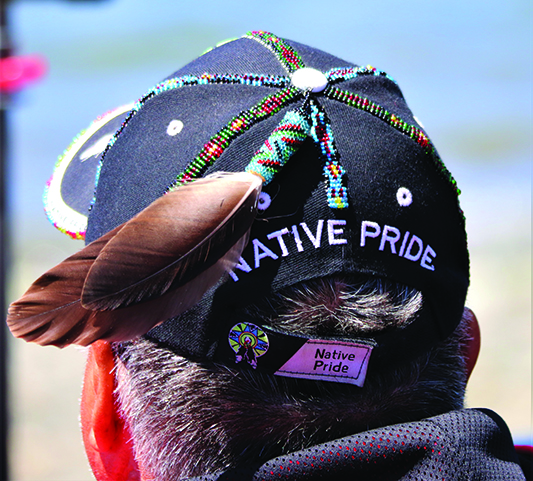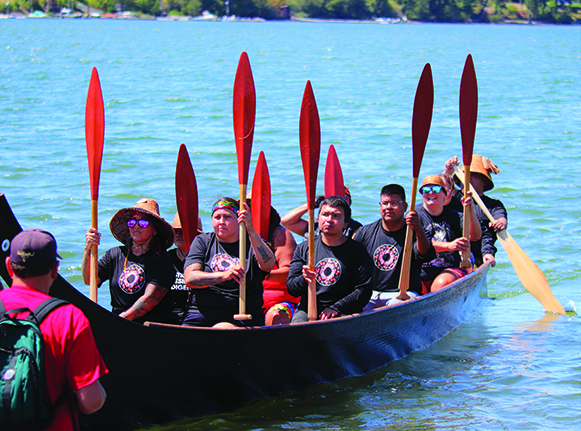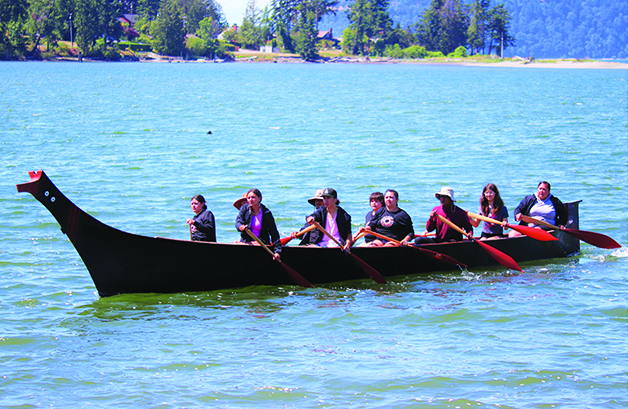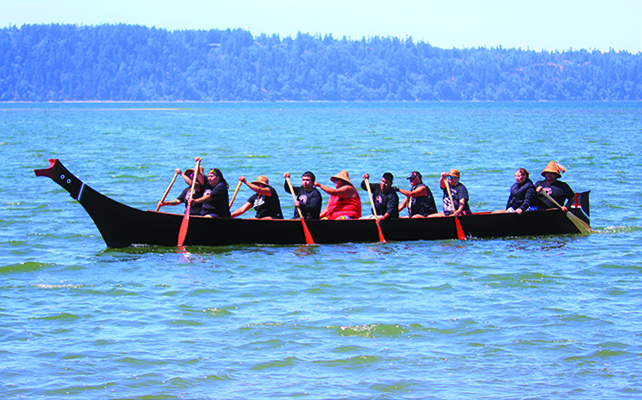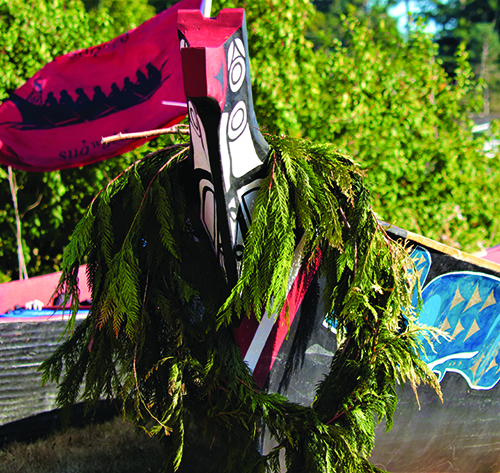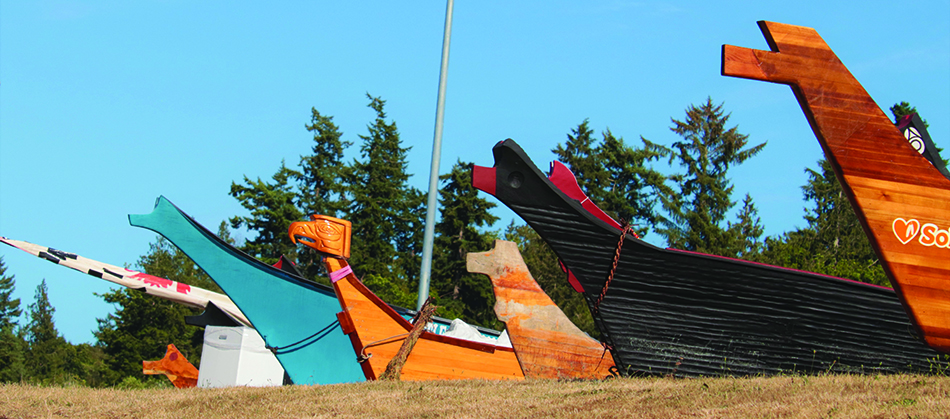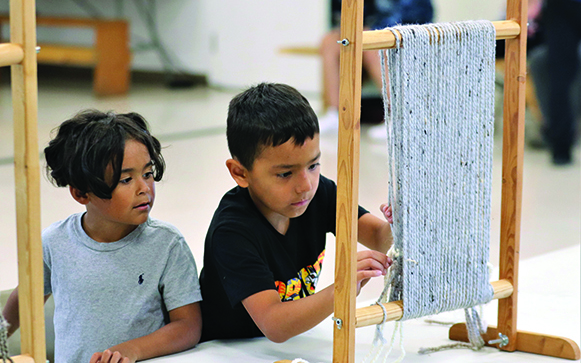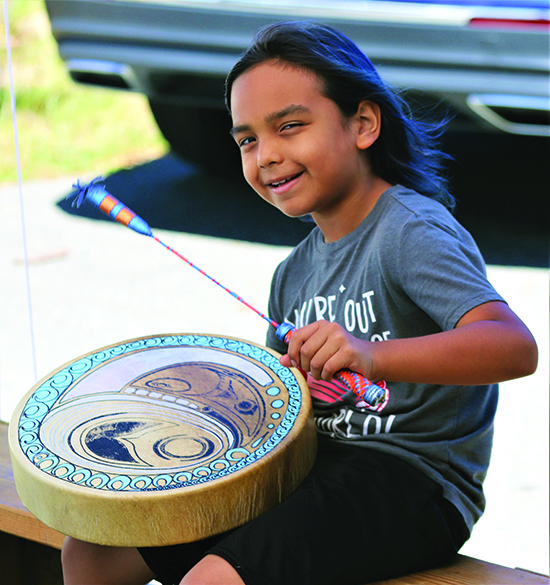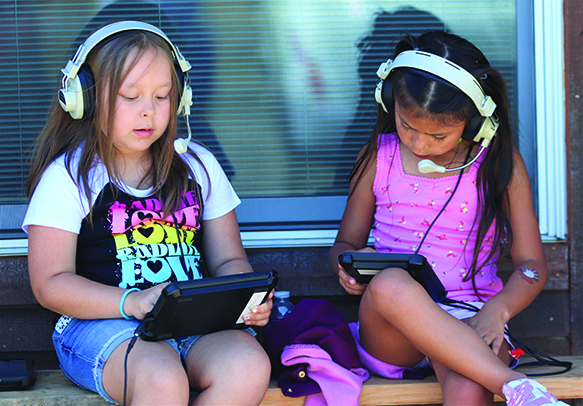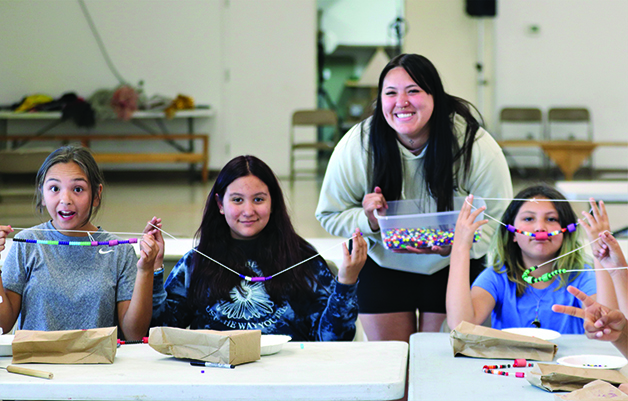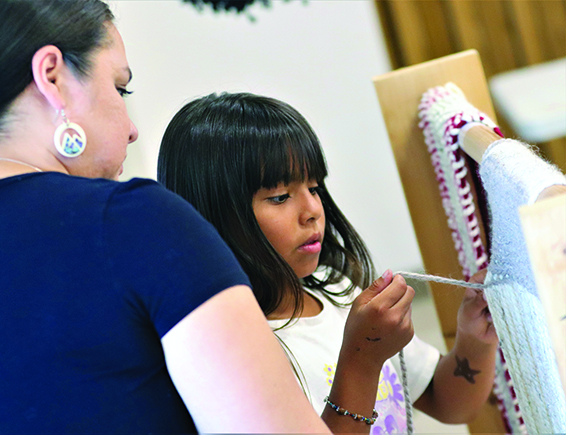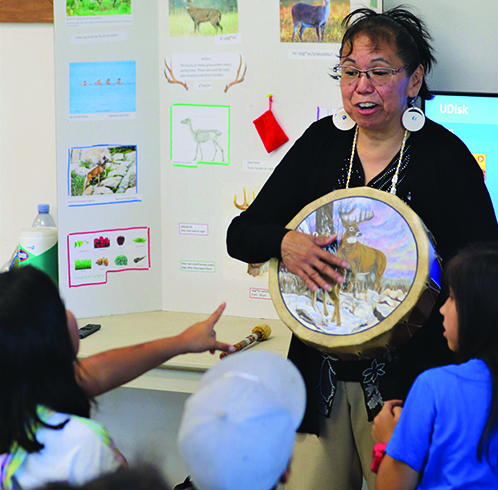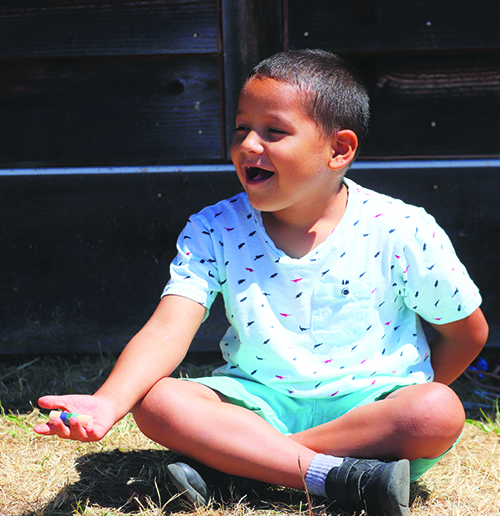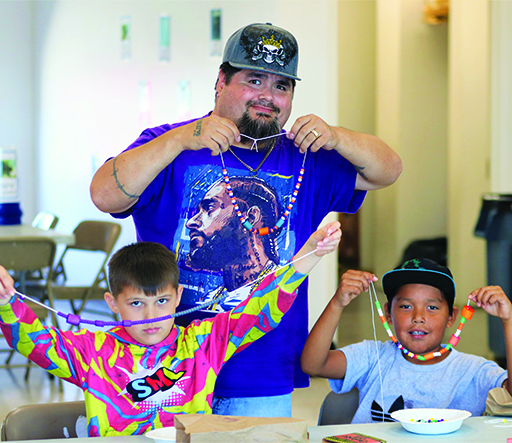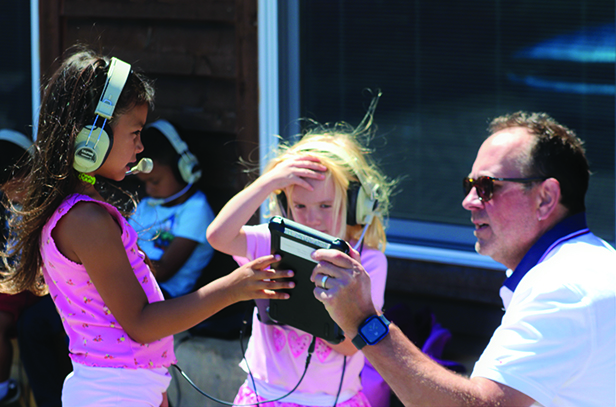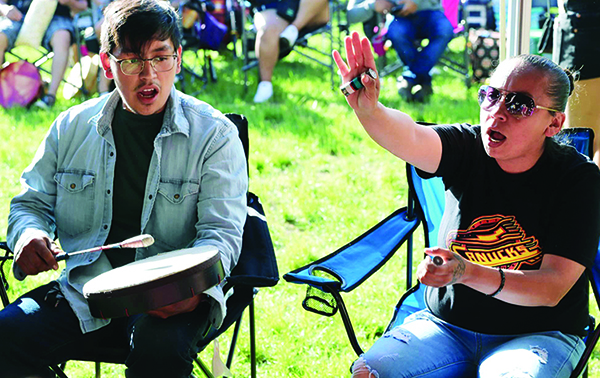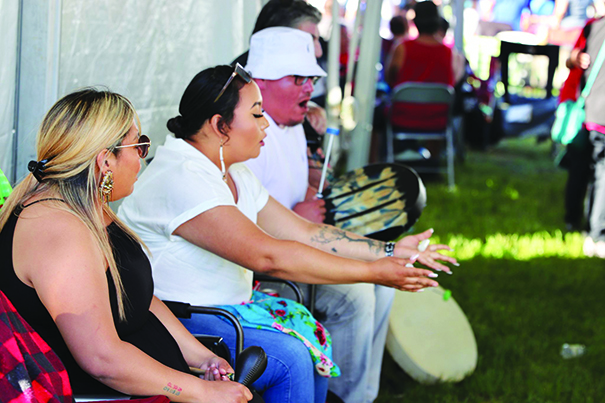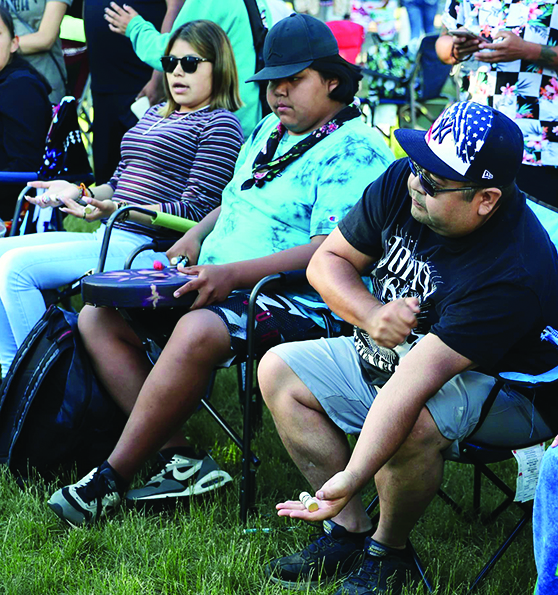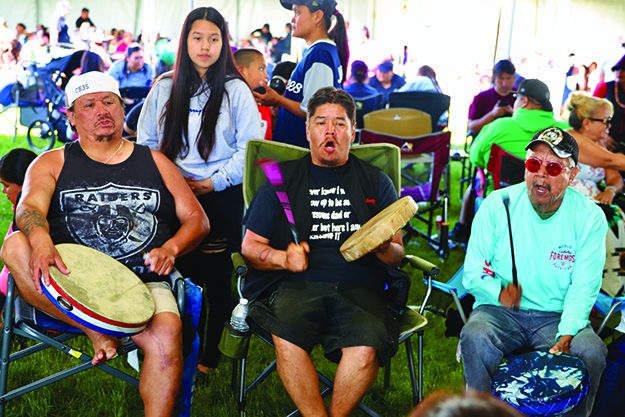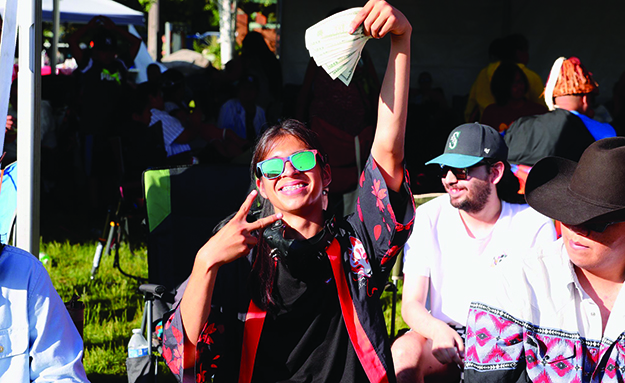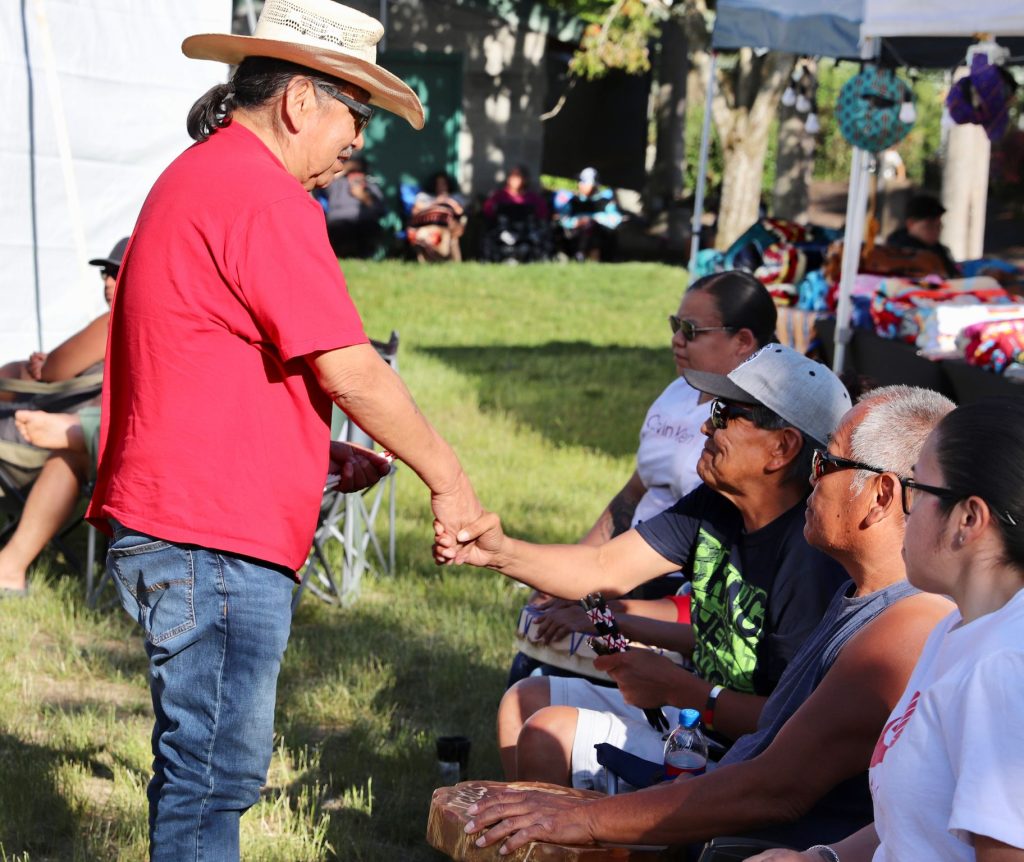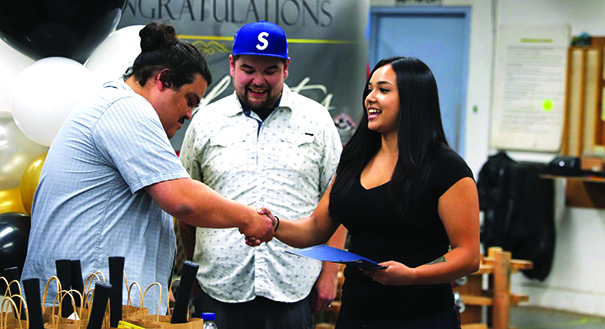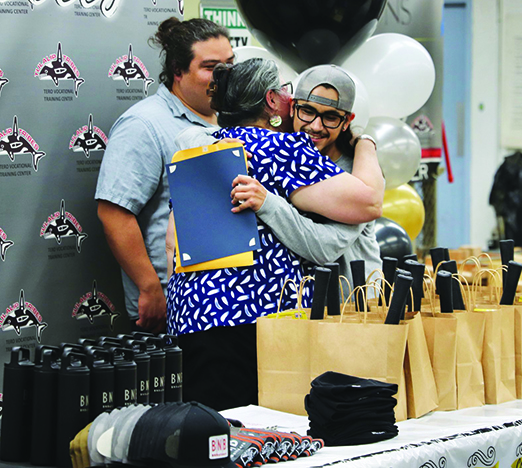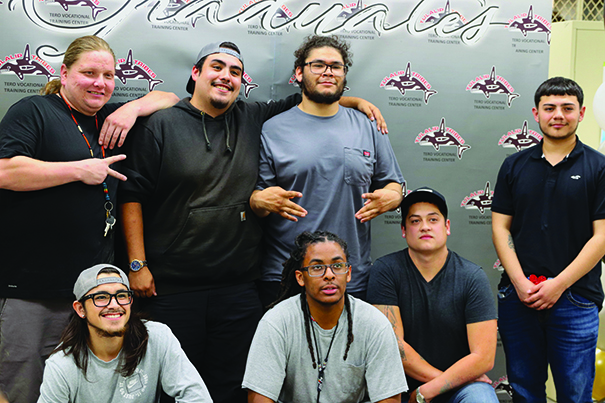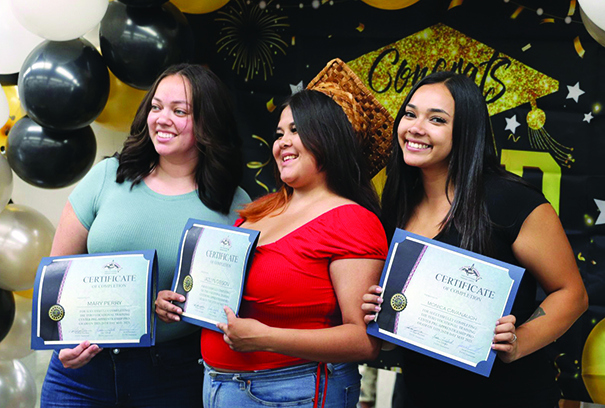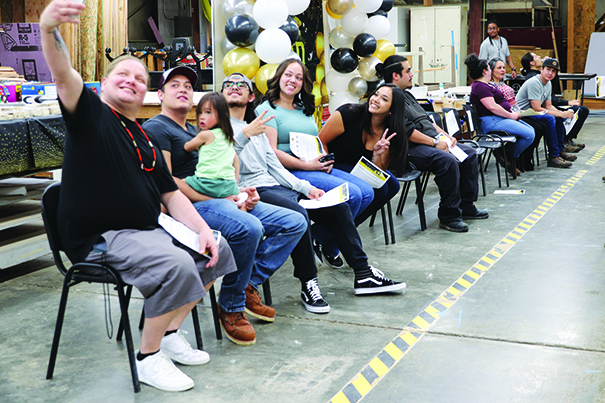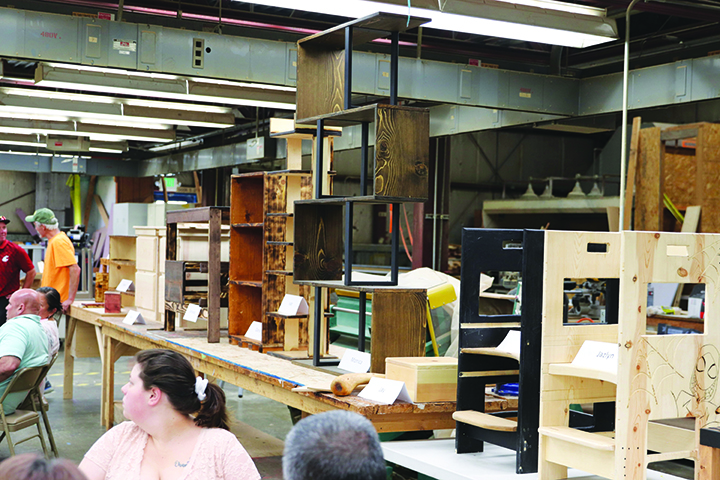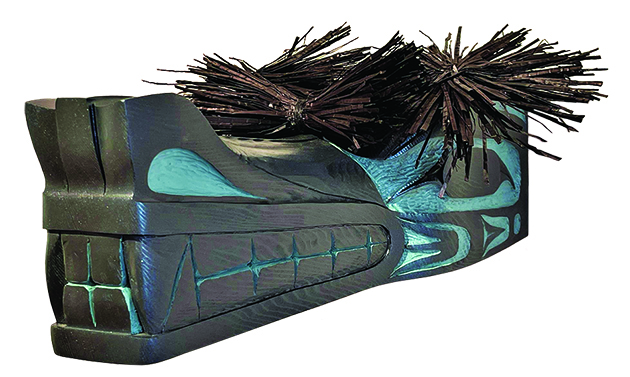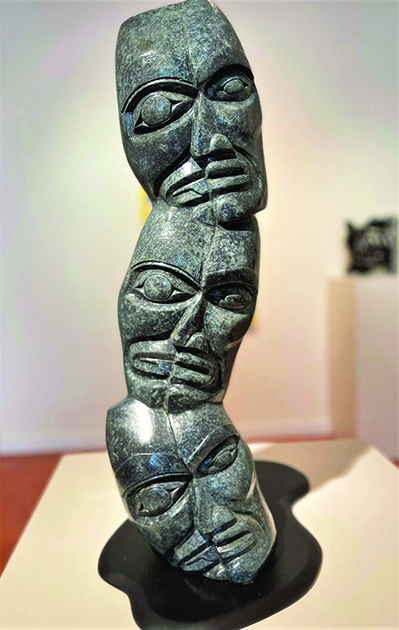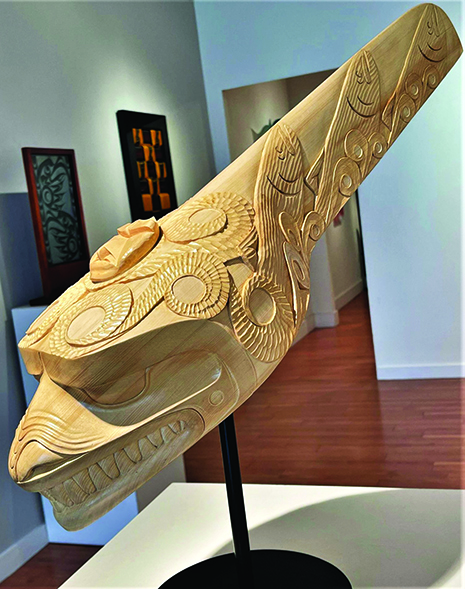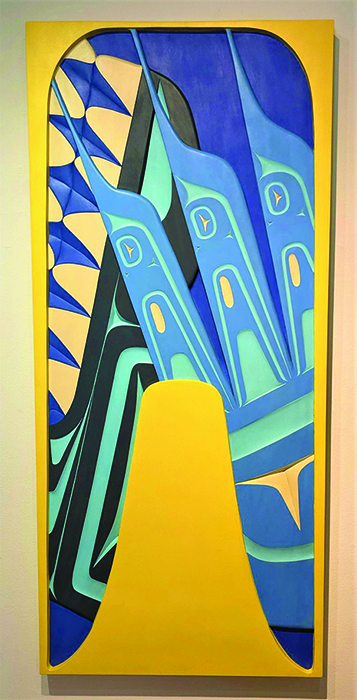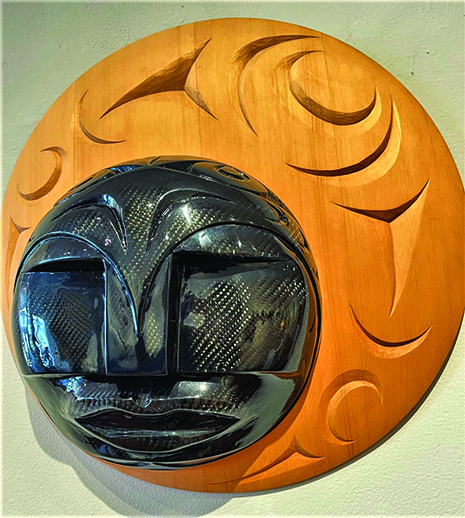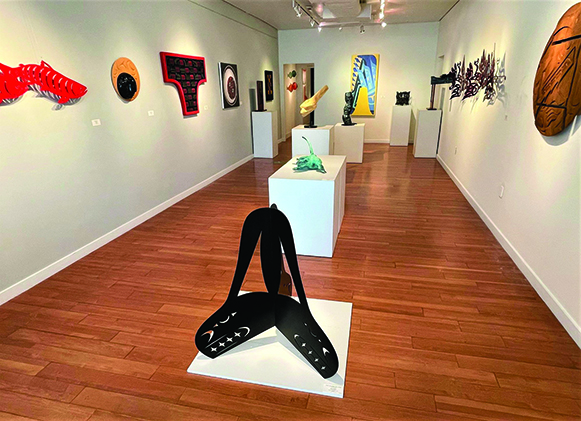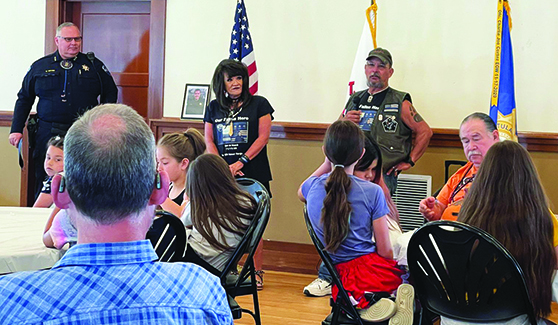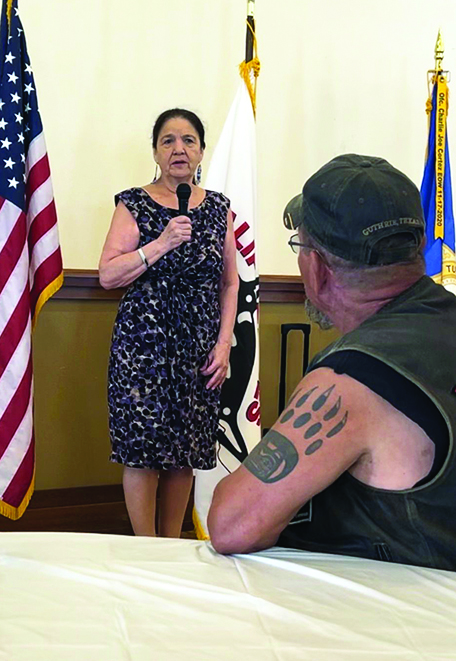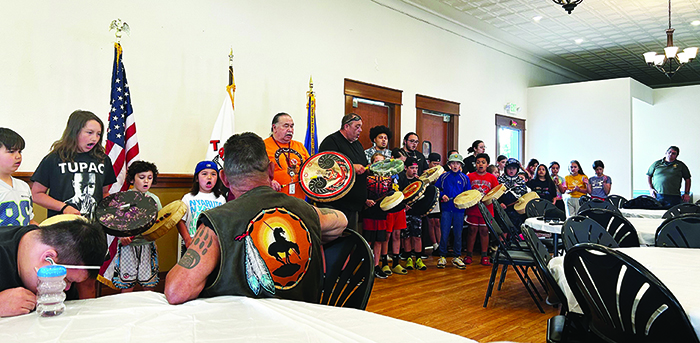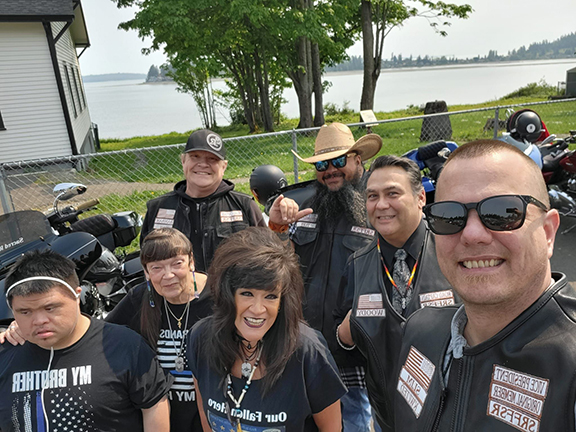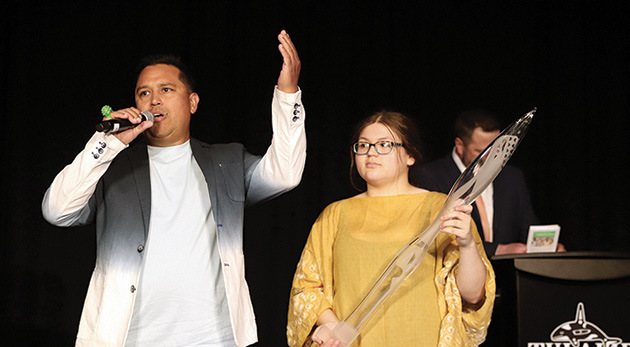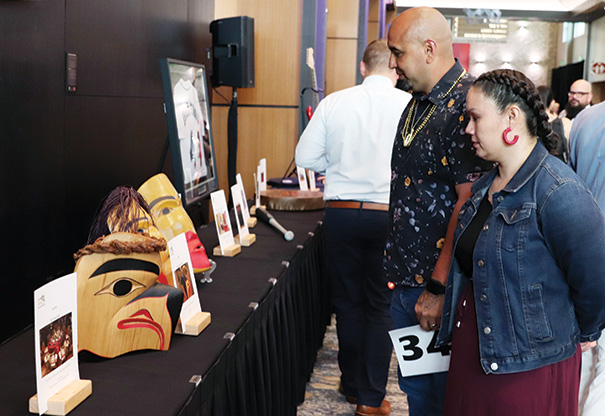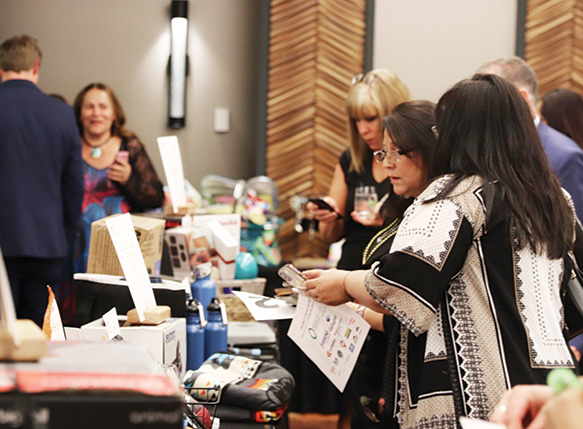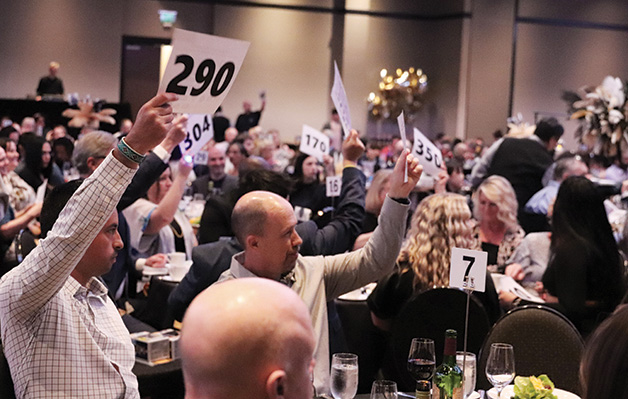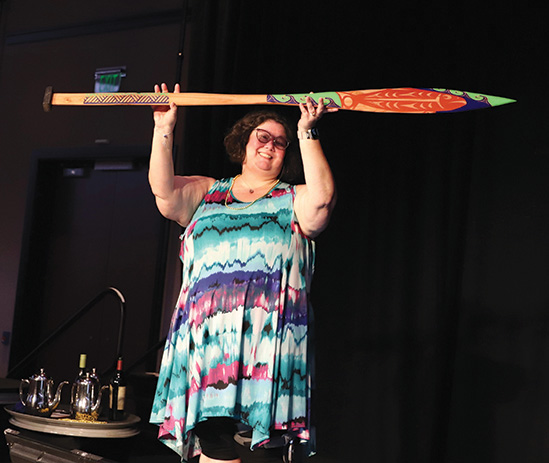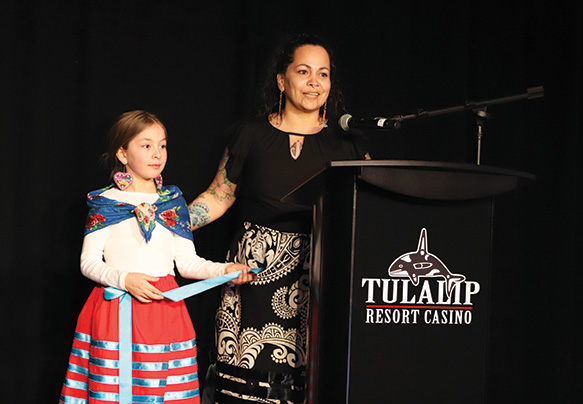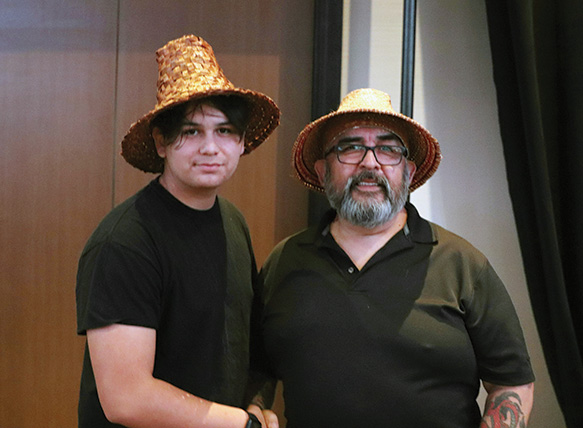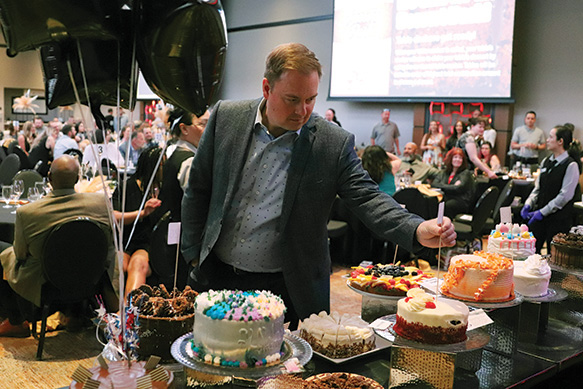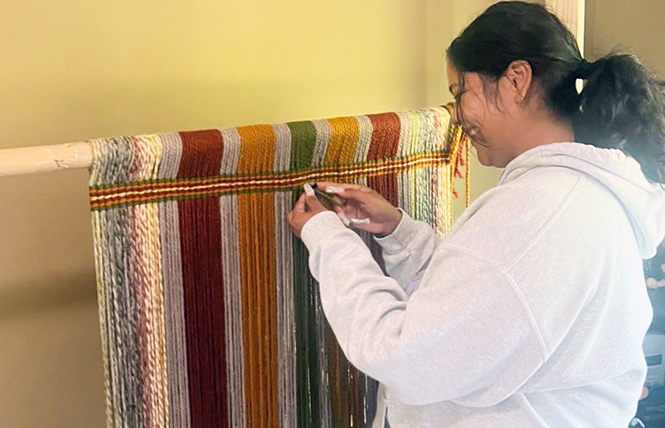
By Kalvin Valdillez, Tulalip News
Long strands of intricately woven wool sway vertically at the bottom of a traditional Coast Salish skirt. Across the top is a horizontal pattern that creates the skirt’s waistband, which often features Salish designs or accessories such as shells and buttons.
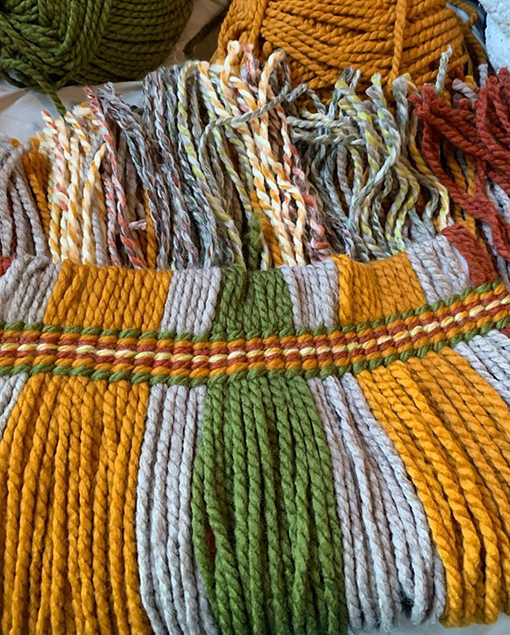
The skirts were a necessity pre-colonization and are now often overlooked by the general public, thanks to some of our other masterful creations such as blankets, shawls and cedar weavings. However, the Coast Salish skirt played an intricate role in the lifeways of our women ancestors. For the skirts provided warmth throughout the cold fall and winter months, and also served as ceremonial attire during traditional gatherings.
Native America is currently experiencing a powerful and important ribbon skirt resurgence. Locally, more and more women from coastal tribes are contributing to what could be the start of a new revitalization movement by wearing wool skirts to ceremonies and as a part of their OOTDs (outfit of the day). These ladies also often alternate between ribbon and wool skirts, to show their continued support of the ribbon skirt initiative.
Although new to the game, Tulalip tribal member Krislyn Parks has found a passion in creating traditional Coast Salish skirts. Her handmade textiles with exquisite color schemes are bringing more attention to a practice that was nearly lost during the assimilation era, while also putting a her own spin on it.
After coming across her beautiful work, on her Instagram business account, Tulalip News reached out to Krislyn to chat about her newfound passion, it’s history, and what she hopes to accomplish through her handwoven skirts.
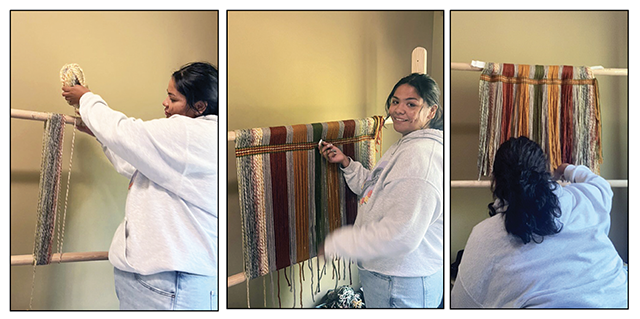
Tulalip News: Why don’t we start by learning a little bit about you?
My name is Krislyn Parks. I am 20 years old. I’m Kristie Fryberg and Jared Parks’ kid. My grandparents are Karen Fryberg and Cyrus Fryberg Sr., and Beatrice Forman and Leslie Parks. I’m proud to be Tulalip because it roots me down here from generation to generation. I have family ties here and I think it’s important to learn about my people and who I am. And be proud of who I am – express my culture and show everybody what it means to be Tulalip and who we are today.
What are some of the cultural practices that you take part in?
As a kid, I always took part in canoe journeys and sweat lodge, my dad’s side of the family always participated in that. And as I’ve gotten older, I was taught how to bead by my auntie Winona Shopbell and uncle Bubba Fryberg. My grandma Karen taught me how to sew at a young age so I could make my regalia. And I picked up weaving when I joined the Lushootseed department. Michelle Myles sat down with me a couple of days and just weaved with me, showed me how to do it and got me interested in it.
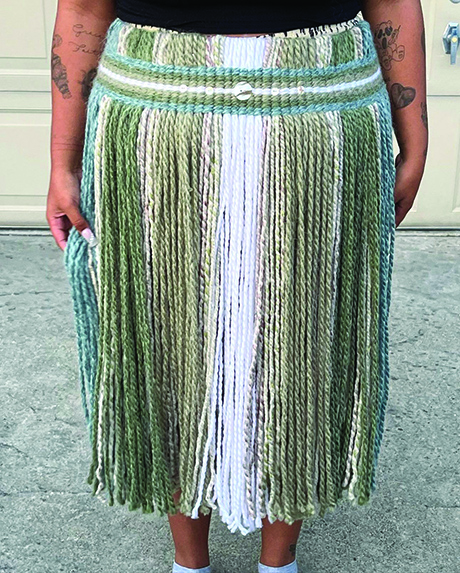
That’s awesome! Can you talk to us about the wool skirt and it’s history?
The wool skirts were something that we would wear during the cold time. Just to keep us warm, our women would be weaving all the time, that was one of our jobs. I’ve weaved cedar before, but weaving with fabric was new and really interesting. And so was learning about the woolly dog.
The story about woolly dogs is fascinating. Can you tell our readers more about the woolly dogs?
Our people used to have our own island that we used to take care of. Our ancestors, the women of the families, would go out onto the islands and take care of our woolly dogs. They would process their wool into the yarn used for skirts.
That shows how strong our ancestors were. To me, it’s always about recognizing how much they put into their work and how much love they put into it. They didn’t get to go to the store and buy yarn. They had to breed that type of dog, take care of them, and then they would shave the wool off the dogs every season. They would then pull it, spindle it in a whorl, and turn it into its own yarn.
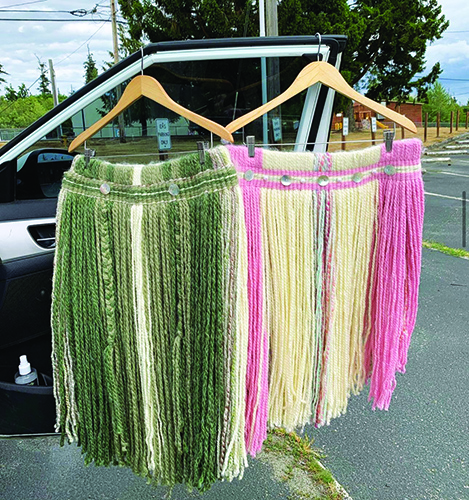
Now that woolly dogs are extinct, what type of wool do you use in your work?
I use alpaca wool instead of woolly dog because – well, because we can’t get any of that anymore. We can never get that type of wool back, but we can keep preserving the tradition in different ways by showing and telling people about that kind of wool compared to the kind of wool we are using today.
You mentioned that you picked up the practice from Michelle Myles, can you expound on the beginning of your weaving journey?
When I started, I learned everything at the Lushootseed department. We had looms that were donated to us that were kind of old and broken down. But, we decided to work with them. And really, we just picked it up while preparing for language camp, to teach the kids about weaving and how to do it.
In our department we always say that we can’t just teach the kids and not practice the work ourselves. I teach weaving in the winter because that’s when our ancestors would weave at Tulalip. And my first time teaching that weaving unit, it was hard to connect with the kids. Learning how to weave this summer will make that weaving unit a lot easier. Now I’ll be able to bring in the loom and show the kids how to warp up their own weavings and make skirts for the classes, which I’m really excited to show the kids this year.
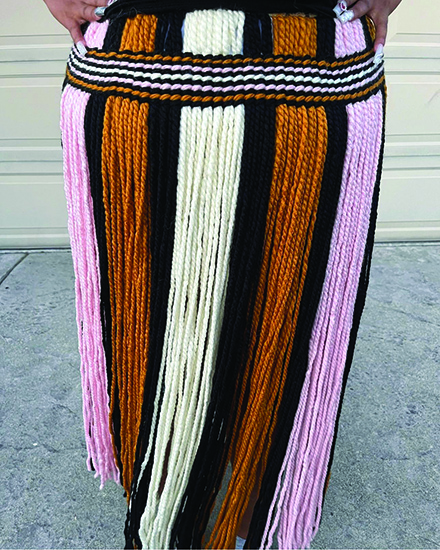
Now that you’ve learned how to weave wool, can you explain your process of creating a skirt?
Weaving wool skirts is really calming for me. I typically do it at home now, I have my own little weaving station setup in my room. Once you have your wool, you’re going to setup your loom and it’s going to need to have two bars on it. And then you’re just going to start warping the wool, just wrapping it around the loom. For an adult sized skirt, I would wrap it around 200 times, warping it up on the loom so it looks like a flat map. And then, I would take individual sections by two and just weave. Then I’ll twist through every two pieces and that’ll will be like me creating the design. It’s definitely all about the twining.
We heard that you paid homage to Barbie through your skirt designs. Let’s hear the deets!
We did! During the Barbie movie release, Marysa Sylvester did an Indigenous Barbie shirt and I bought it. So, I was like I need to make a skirt! Me and my coworker both made Barbie-themed pink and purple skirts and we raffled them off as a part of a Barbie raffle. It was so much fun.
When I was growing up, there were Indigenous Barbies that Mattel put out and they were in powwow regalia. So, we were talking about making dolls with some wool skirts for our classes because it would be nice to show the kids our representation. To show not only what a Native American Barbie looks like, but what a sduhubš, Snohomish Tulalip, Barbie would look like.

Since you started this new endeavor and you now have skirts available for purchase, have you seen any of your skirts in the wild or during a ceremony?
I’ve had a few so far. I made a skirt for myself and I ended up letting a friend have it, and she wore it to a jam that was happening that night. It was also really awesome to see a couple little girls and my old coworker walking around in my skirts and dancing in my skirts, when I know that they would’ve otherwise worn ribbon skirts. I’m glad that they’re culturally getting down, and are enjoying it and representing it with pride. I think that’s such a beautiful thing.
You are not only learning about wool weaving and how to do it, but you’re also passing down that knowledge to the next generation. What does it mean to you to carry on this tradition?
For me that means being open to share with anybody who is wanting to learn. Since I’ve learned and picked this up, I’ve had many of my own family members asking me to to host a class and teach them how to do this. I think that really shows how open our tribe is to learning things, we just don’t always have access to it. I think by me doing this, it’s granting more opportunities for other people to feel comfortable expressing their culture.
As you continue to practice this tradition, what do you hope to see in the future for your skirts?
I hope to see other kids find this way of life and that they show me how they practice it. This is something that our people dedicated their lives to, and there’s reason for that. It’s always going to be my main goal to see somebody I taught speaking the language and practicing all the arts our people did.
Where can people find your work and purchase your weavings?
On my Instagram account, @krislyns.kreations, or on Facebook under Krislyn Jo. Those would be the best ways to reach me. I know that every Native got some type of social media, so that’s the way for right now.
